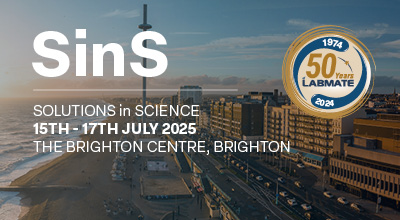| Abstract Title: | Extending the Applicability Range of Refractive Index Detector via hyphenation with temperature gradient Temperature-responsive Liquid Chromatography for quantitative analysis |
| Presenter Name: | Ms Elena Bandini |
| Co-authors: | Dr Hamed Eghbali Prof Frederic Lynen |
| Company/Organisation: | University of Ghent |
| Country: | Belgium |
Abstract Information :
Refractive Index Detection (RID) is the liquid chromatography detector most approaching the characteristics of universal detection, allowing ideally for a standard independent analysis. Because the refractive index is a bulk property of a substance it provides for a much more homogeneous response between different analytes as compared to other detectors such as UV or mass spectrometry [1]. Unfortunately, the applicability of RID is limited to isocratic High-Performance Liquid Chromatography (HPLC) because of its extreme sensitivity to compositional solvent changes. In this context, temperature-responsive stationary phases can be suitable to circumvent the issues related to RID and solvent gradients. Temperature-responsive polymers are typically water-soluble smart polymers, that change their conformation when exposed to an external stimulus, in this case, temperature. While various types exist therein, the polymers depicting a Lower Critical Solution Temperature have only been used in TRLC so far. At high-temperature, such polymers dehydrate because monomer-monomer forces become dominant, while at lower temperatures the polymer chains are more hydrated and an extended, more polar phase is formed. This mechanism, depicting a more gradual transition with temperature when the polymer is coupled to silica, allows for control of the analyte’s retention as a function of temperature as they pass through the column when using only water as the mobile phase. Consequently, solvent gradients can be avoided in TRLC, and replaced by a decreasing temperature profile throughout an analysis. In this work, the compatibility of temperature gradient TRLC with RID is demonstrated through the analysis of a series of non-UV visible molecules through such an approach [2]. With such a platform, overlapping calibration curves are obtained for chemically similar compounds, meaning the detector response is identical within a marginal error. [3] This approach is demonstrated for the analysis of molecules which are challenging to detect by UV (free fatty acids and long-chain alcohols) and further expanded to larger more complex samples that contain molecules that are difficult to elute with pure water. Because the TRLC responsive behaviour is retained even when the mobile phase comprises a moderate fraction of (green) organic modifier this approach is also exploited for the analysis of more apolar solutes. [4] Emphasis is thereby set on longer-chain functionalized hydrocarbons. [1] Snyder, L. R.; Kirkland, J. J.; Dolan, J. W. Introduction to modern liquid chromatography; John Wiley & Sons, 2011. [2] Baert, M.; Wicht, K.; Hou, Z.; Szucs, R.; Du Prez, F. E.; Lynen, F. Exploration of the selectivity and retention behaviour of alternative polyacrylamides in temperature-responsive liquid chromatography. Analytical Chemistry, 2020. [3] Bandini, E.; Wicht, K.; Ampe, A.; Baert, M.; Eghbali, H.; & Lynen, F. Hyphenating temperature gradient elution with refractive index detection through temperature-responsive liquid chromatography. Analytica Chimica Acta, 2022. [4] Ampe, A.; Wicht, K.; Baert, M.; Broeckhoven, K.; & Lynen, F. Investigation of the potential of mixed solvent mobile phases in temperature-responsive liquid chromatography (TRLC). Analyst, 2021.

